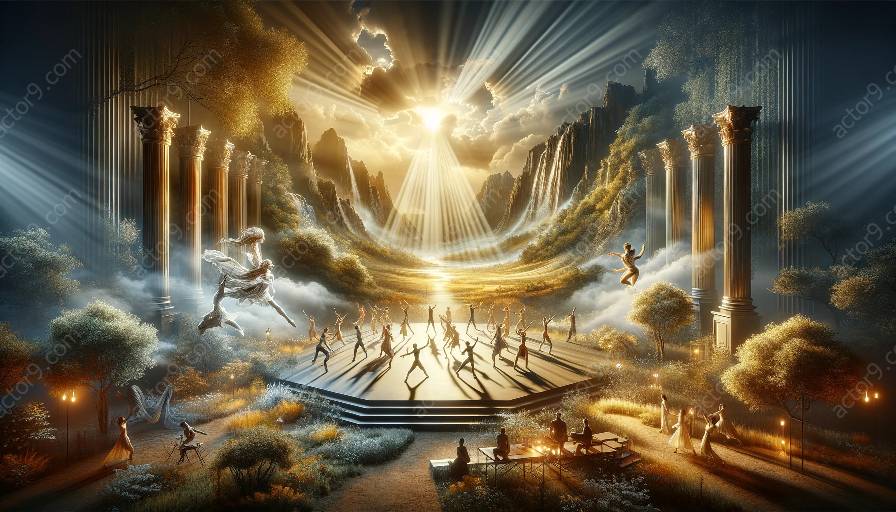Physical theatre is a captivating art form that combines the use of the body, movement, and expression to convey a story or emotion. The role of lighting in physical theatre is integral to the success of a production, as it can enhance the mood, focus the audience's attention, and create an immersive experience.
The Role of Lighting in Physical Theatre
Lighting plays a crucial role in physical theatre, as it helps to establish the atmosphere and tone of a performance. It can evoke emotion, emphasize movement, and sculpt the space in which the performers interact.
Furthermore, lighting design in physical theatre is not solely about illuminating the performers; it extends to creating a visual landscape that complements and enhances the narrative. The choice of lighting can manipulate the audience's perception of time, space, and even the characters themselves.
Indoor Physical Theatre Productions
When designing lighting for indoor physical theatre productions, there are several key considerations to keep in mind. The controlled environment allows for more precise manipulation of lighting elements, but also presents unique challenges.
1. Venue
The venue's architecture and layout greatly influence the design choices for indoor productions. Different types of indoor spaces, such as black box theaters, proscenium stages, or unconventional performance spaces, necessitate different approaches to lighting design.
2. Technical Equipment
Indoor productions typically make use of a wide range of technical equipment, including spotlights, LED fixtures, and color filters. This allows for intricate control over light intensity, color, and focus, enabling designers to create dynamic lighting effects that enhance the performance.
3. Effects and Ambiance
In indoor settings, designers have the freedom to incorporate various lighting effects, such as gobos, projections, and textured lighting, to create specific moods and atmospheres. These effects can transform the performance space into a canvas for visual storytelling, enriching the audience's experience.
Outdoor Physical Theatre Productions
Outdoor physical theatre productions present a different set of challenges and opportunities for lighting design. The natural elements, open spaces, and varying ambient light levels require a unique approach to creating a compelling visual environment.
1. Nature and Surroundings
The outdoor environment often serves as a backdrop for the performance, and the lighting design must complement and interact with the natural elements. Designers must consider the position of the sun, moon, and other ambient light sources, as well as the impact of weather conditions on the performance.
2. Weather Considerations
Outdoor productions are susceptible to weather changes, which can affect the execution of the lighting design. Contingency plans for inclement weather, as well as adaptability in lighting equipment and rigging, are essential for ensuring the success of outdoor performances.
3. Connectivity with Audience and Environment
Unlike indoor settings, outdoor physical theatre productions provide a unique opportunity to integrate the surrounding environment into the performance. Lighting design can be tailored to engage with the natural landscape, draw attention to specific elements, and create a sense of connection between the audience, performers, and surroundings.
Conclusion
Both indoor and outdoor physical theatre productions offer distinct challenges and opportunities for lighting design. Understanding the unique considerations of each setting is essential for creating engaging and impactful visual experiences that complement the physical performance. By leveraging the role of lighting in physical theatre, designers can contribute to the overall narrative and emotional impact of the production, enriching the audience's experience.




































